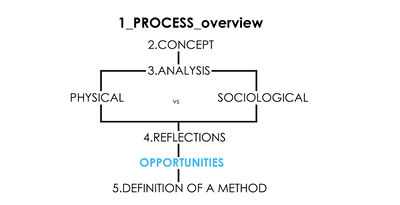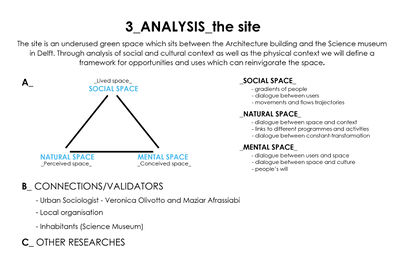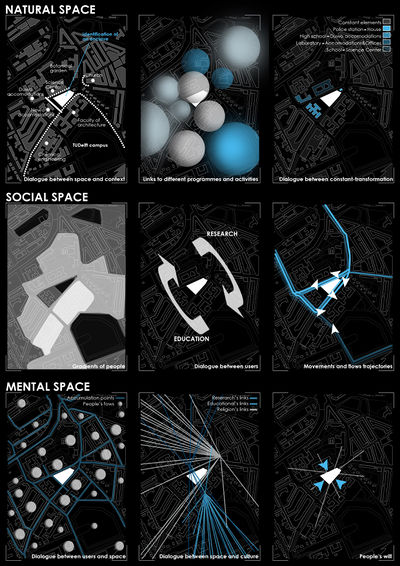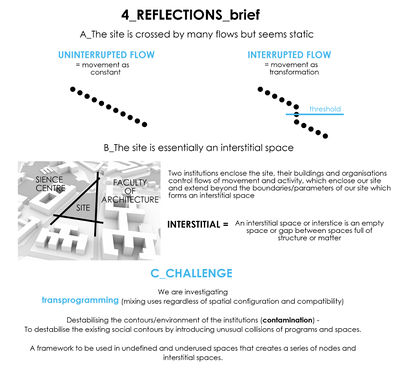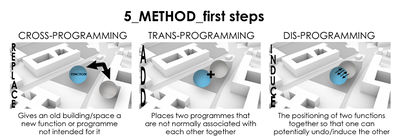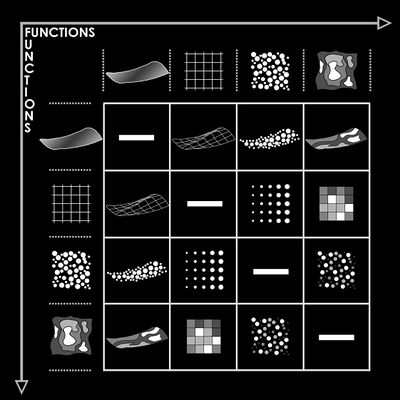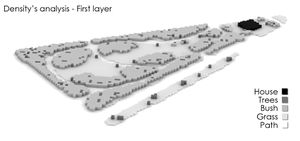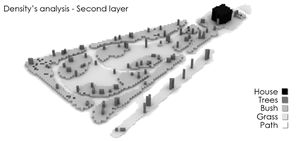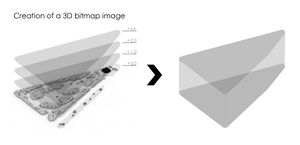atom10:CONCEPT-CHALLENGE
(→Web sites consulted) |
(→Meeting: Maziar Afrassiabi, Urban Sociologist) |
||
| Line 190: | Line 190: | ||
We discussed ways of gathering and representing data. The municipality provide information regarding demographics which can be used to show a comparison between the surrounding context and other areas. He also suggested looking at Lefebvre’s book Rhythmanalysis. | We discussed ways of gathering and representing data. The municipality provide information regarding demographics which can be used to show a comparison between the surrounding context and other areas. He also suggested looking at Lefebvre’s book Rhythmanalysis. | ||
| + | |||
We will study a range of rhythms around the site; physical movement, knowledge transfer and social and economic flows. This will give the site a context which can be used to define where and how our intervention will form and what activities it should encourage. | We will study a range of rhythms around the site; physical movement, knowledge transfer and social and economic flows. This will give the site a context which can be used to define where and how our intervention will form and what activities it should encourage. | ||
| − | + | ||
---- | ---- | ||
Revision as of 14:52, 26 September 2011
Contents |
Analysis
Cross/trans/dis-programme
“Architecture is a combination of Space, Events and Movement without any hierarchy” (Bernard Tschumi)
_The concepts of cross/trans/dis-programming will allow for a flow of dialogue by emphasizing transformation, adaptation and movement in design. _Trans-programming can produce a path for urban interchange. The unexpected interaction resulting from this is the challenge. _Dialogue between form and function results in spaces of urban interchange. In this way the flow of dialogue is not only increased between the different users of the space/building, but also between the users and the space/building/urban sourranding.
Now we want to create a description of our purposed/imaginery activities, exploring how they would use the site and what sort of structure they requires. At the same time we want to develop a matrix or diagram representing the different possible uses of space.
Work in progress
Client,Challenge,Intervention
Client: people moving through the space
Challenge: disrupting the monoculture of the institutions
Intervention: auxiliary uses which break the rhythm of movement and the contours of the institutions
Matrix of imaginery uses
- Oral history museum
- Bar/Nightclub
- Botanical garden
- DMT vending machines
- Bicycle lock/shelter
- Playground
- Library
- Sushi restaurant
- Gym
- 24 hour shop
- Japanese tea house
- Petrol station
- Labyrinth
After imagining some uses for the site we began to map the possible parameters of the activities.
- Opening times
- Type of activity (Passive/Active)
- Physical/abstract (Knowledge, social, primary, physical, economic)
- Demographic
- Physical requirements
- Structure
- Solitary or group
The excel spreadsheet mapping characteristics can be found here: https://docs.google.com/spreadsheet/ccc?key=0AkdjP5-njbzYdHFwSnRaa1RjaGtZM1ZrQ3QwekkzdWc&hl=en_GB
Define the intervention
Three methods define the intervention:
The intervention will be responsive to the different proposed uses. Optimisation will occur between conflicting uses, existing movement and rhythm and the density constraints of the site.
Site analysis
Mapping density of elements in the park. By mapping density we can create a gradient of possibilities. The density will indicate what is accessible and will fluctuate according to the season. This denisty will map the site plan and indicate where the intervention can form.
Rhythm analysis
The surrounding institutions control the rhythm of movement and activity surrounding and extending beyond the site. We need to map and represent the contours of the flow of people around the site. This analysis will help us to define where the intervention can engage with users.
How can we map rhythm? Using data based on opening times, lectures, number of students we can create a contour map of flows for the two main institutions,
- Library
knowledge flow opening times books loaned out new journals, every day/week newspapers
- Architecture building
lectures times/students cafe/canteen espresso bar library university employees
- Science museum
opening hours visitors
- Sports centre
opening hours registered students
- Botanical garden
opening hours
Different themes for activities: Educational, Cultural and Leisure
Imagined use analysis
Imagining activities and their requirements to create a matrix of characteristics which can be compared and contrasted. Allowing us to analyse how different uses can interact and inform other uses and forms. What is the reaction of uses? How do they disrupt the existing flows and rhythms?
Possible parameters:
- Opening times
- Type of activity - passive/active
- Physical/abstract - knowledge, social, primary, physical, economic
- Demographic of users
- Physical/space requirement
- Type of structure
- Individual or group
Validators
We have spoken to Heleen Bothof and Maziar Afrassiabi in order to gain a greater insight into the context of the site and what might be required in the future. They are not acting as clients but as collaborators, giving us new perspectives and background information.
Meeting: Heleen Bothof, Luz architects
There is currently a proposal for 5,000 new homes within the TU Delft campus. A requirement of being granted permission to build these new houses is considering the impact on the local infrastructure. Heleen Bothof is currently developing solutions for the increased amount of green and water space needed. In order to stop flooding, more water capacity needs to be added to the area, this is done through widening canals, making new ones and connecting the waterways together in order to improve the robustness. Green space will be increased by converting car parks and unused spaces. Roof top gardens could also be introduced.
With the Dutch population forecast to grow it seems logical that the pressure to build houses will increase. Our intervention will use this scenario to define the site. Our intervention can also begin to implement and introduce the future scenario.
We are now arranging through Heleen to meet ecologists and local inhabitants to discuss the possibilities of the site.
Meeting: Maziar Afrassiabi, Urban Sociologist
We discussed ways of gathering and representing data. The municipality provide information regarding demographics which can be used to show a comparison between the surrounding context and other areas. He also suggested looking at Lefebvre’s book Rhythmanalysis.
We will study a range of rhythms around the site; physical movement, knowledge transfer and social and economic flows. This will give the site a context which can be used to define where and how our intervention will form and what activities it should encourage.
Web sites consulted
www.statline.cbs.nl
www.delft.buurtmonitor.nl/
Back to Home
